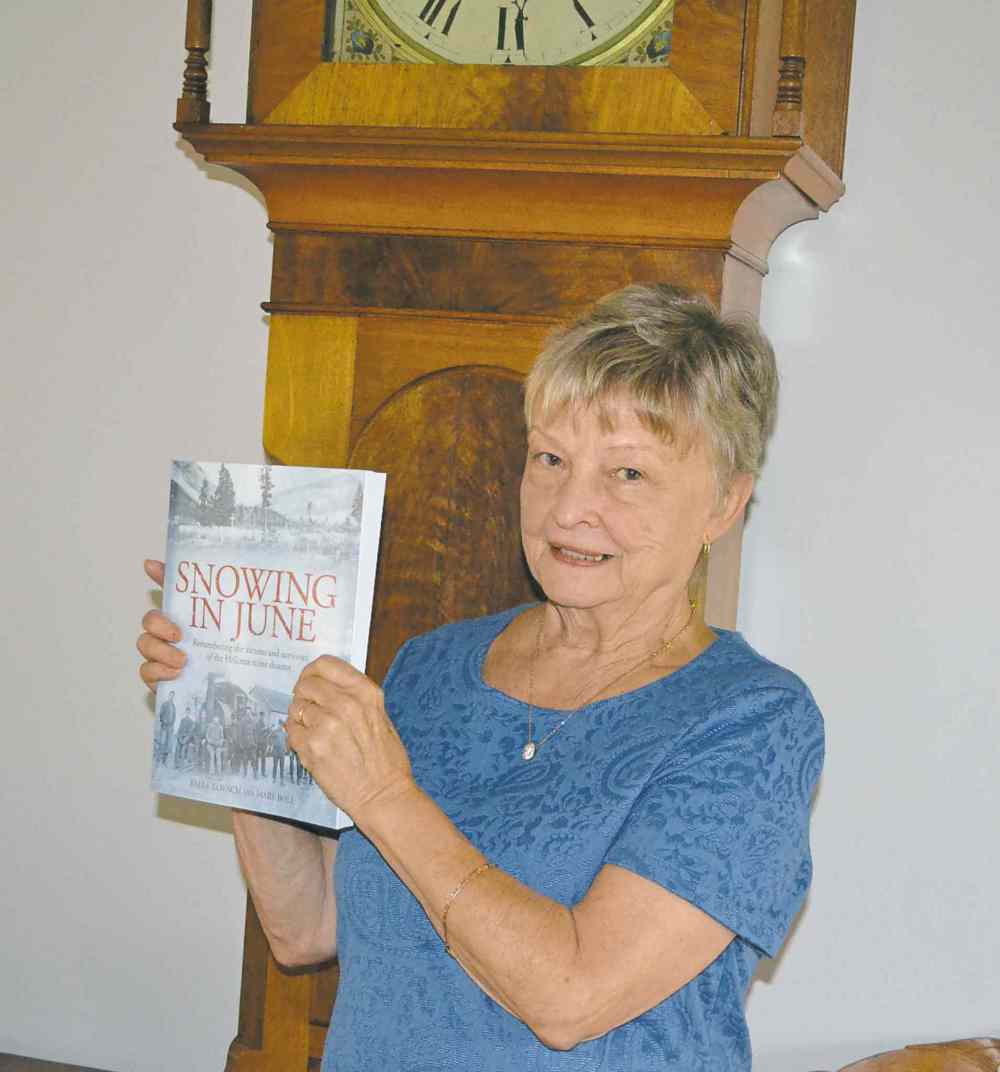Local woman writes history of mining disaster
Advertisement
Hey there, time traveller!
This article was published 28/10/2014 (4023 days ago), so information in it may no longer be current.
On June 19, 1914, at Hillcrest Mines, a town in the Crowsnest Pass, Alta., 189 men died in Canada’s worst mining tragedy.
Crowsnest Pass remembered the 100th anniversary of this historic event this past summer from June 19-21, 2014. Just four days before the commemoration, longtime Fort Richmond resident, researcher, genealogist, Manitoba Genealogy Society volunteer and retired teacher Mary Bole and her sister, Belle Kovach, released their book Snowing in June, published by Crowsnest Pass Historical Society.
Snowing in June documents the lives of the victims of the Hillcrest Mine Disaster.

About the Hillcrest Mine Disaster Bole says, “A lot of studies were done, but nobody studied who the men were.”
Bole and Kovach’s goal was to find out about the men who died, not to explore the reasons for the explosions. Both women grew up in the mountains near the coal mines. Kovach, who still lives in Hillcrest, Alta., has always had an interest in researching the lives and victims of this
tragedy and she engaged her sister to join her in the quest.
A project they thought would take a few months turned into a long journey of research and connecting with victims’ and survivors’ families.
“We worked day and night for four years,” Bole says.
They found the birthplaces of victims, where they lived, their families, their next of kin, and their occupations. They used libraries, census records, public records, and Ancestry.ca
One of the most impactful stories of their research was based on an interview published by the Frank Slide Interpretive Centre with Julia Makin (nee Elick), who lost her father in the disaster.
Making was eight years old in 1914 and at school when she heard the whistle signalling an alert. She remembers the washhouse being cordoned off to keep everyone back.
“Every time the coal cars came up from the mine with the bodies wrapped up in blankets, the women would run to the cars.”
The whole town came out, even the children. She remembers her fear of the rescue men with gas masks and equipment.
The day of the burial “the men were wrapped in cheese-cloth, like mummies.” She remembers, “It was snowing when we buried them. At the funeral they had all the caskets lined up.
“Mother buried her husband, had a baby, and lost her home all within two days. And it was snowing in June.”
Helen Lepp Friesen is a community correspondent for The Sou’wester. You can contact her at helenfriesen@hotmail.com




